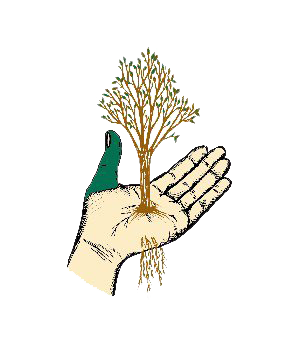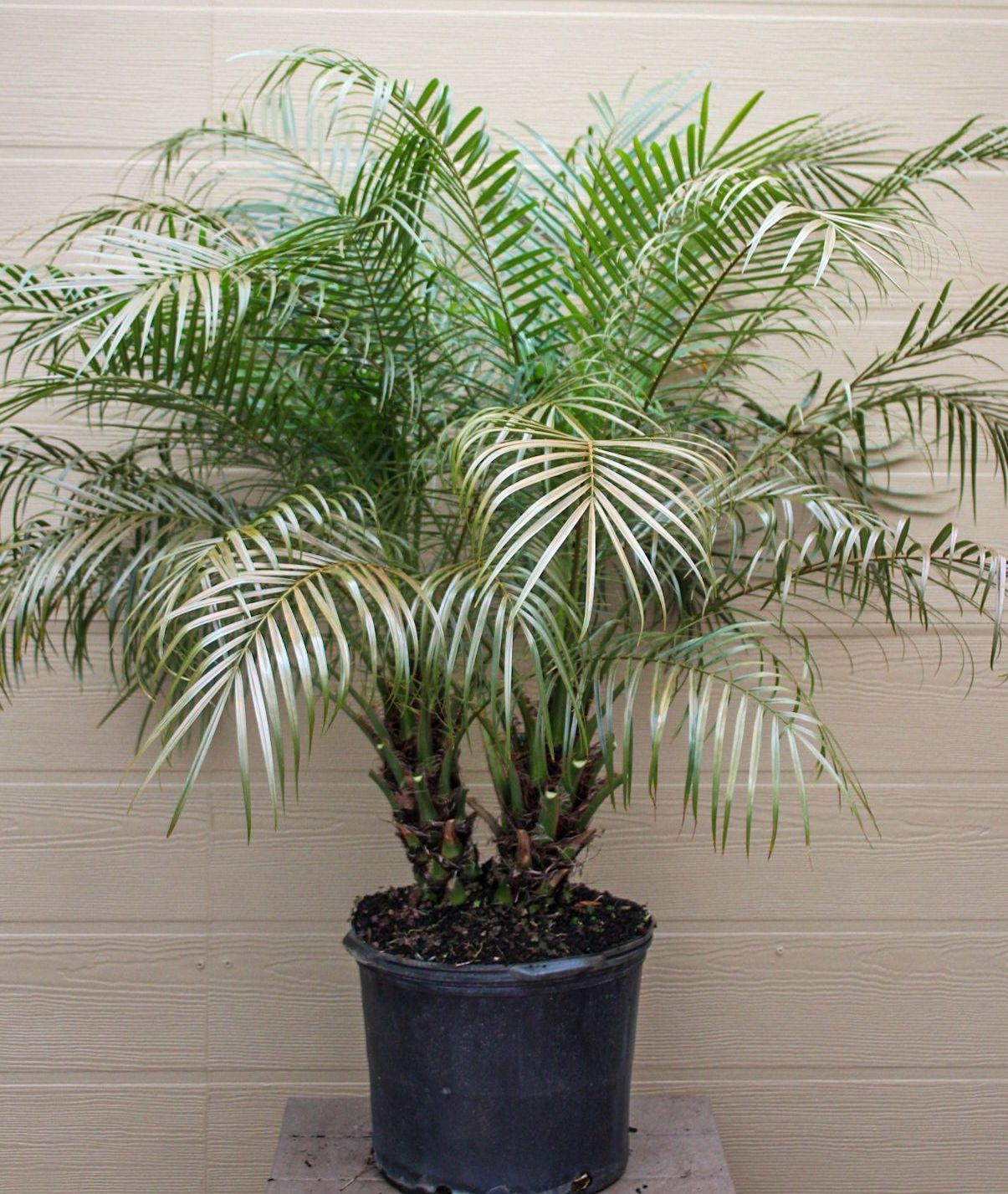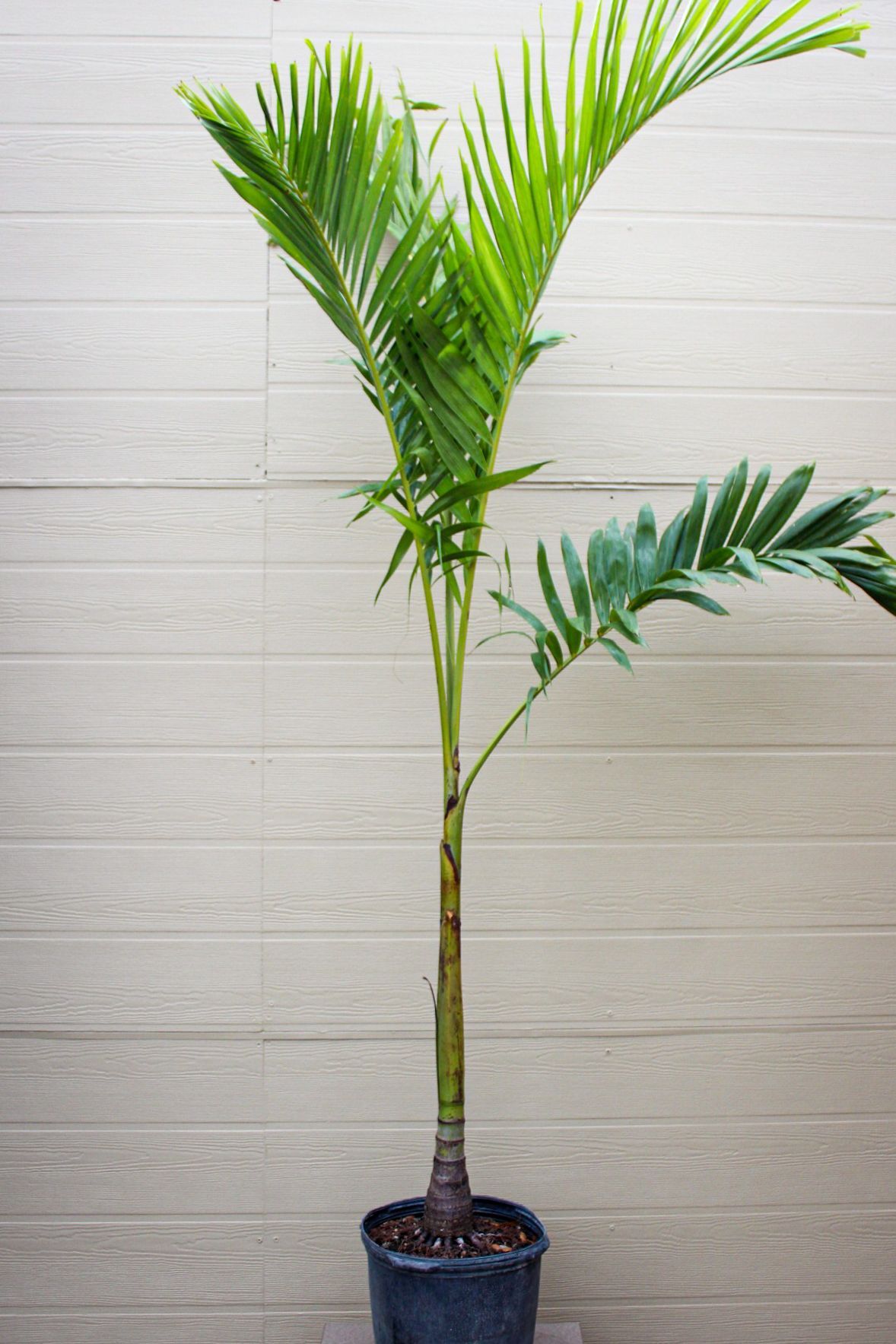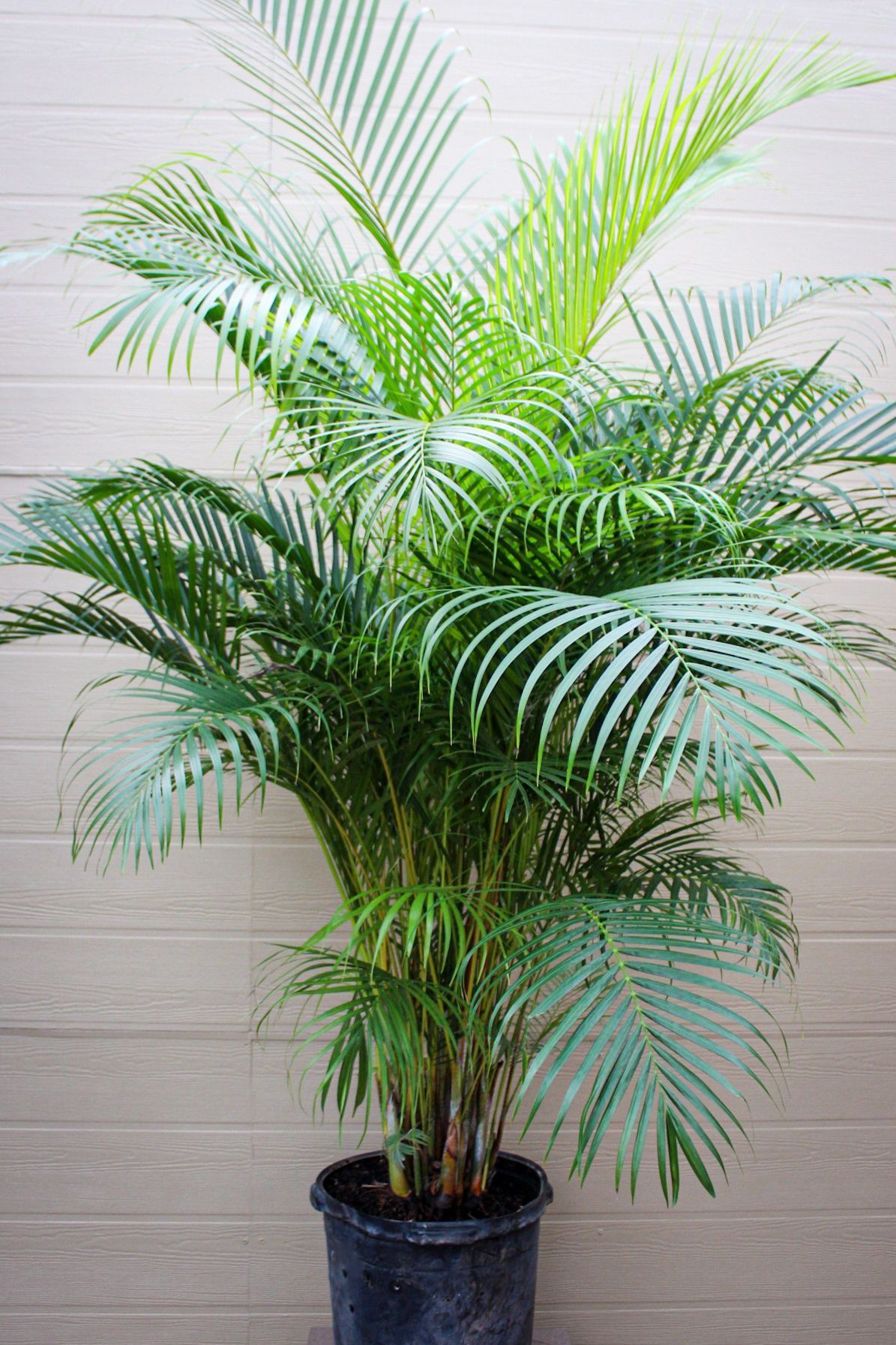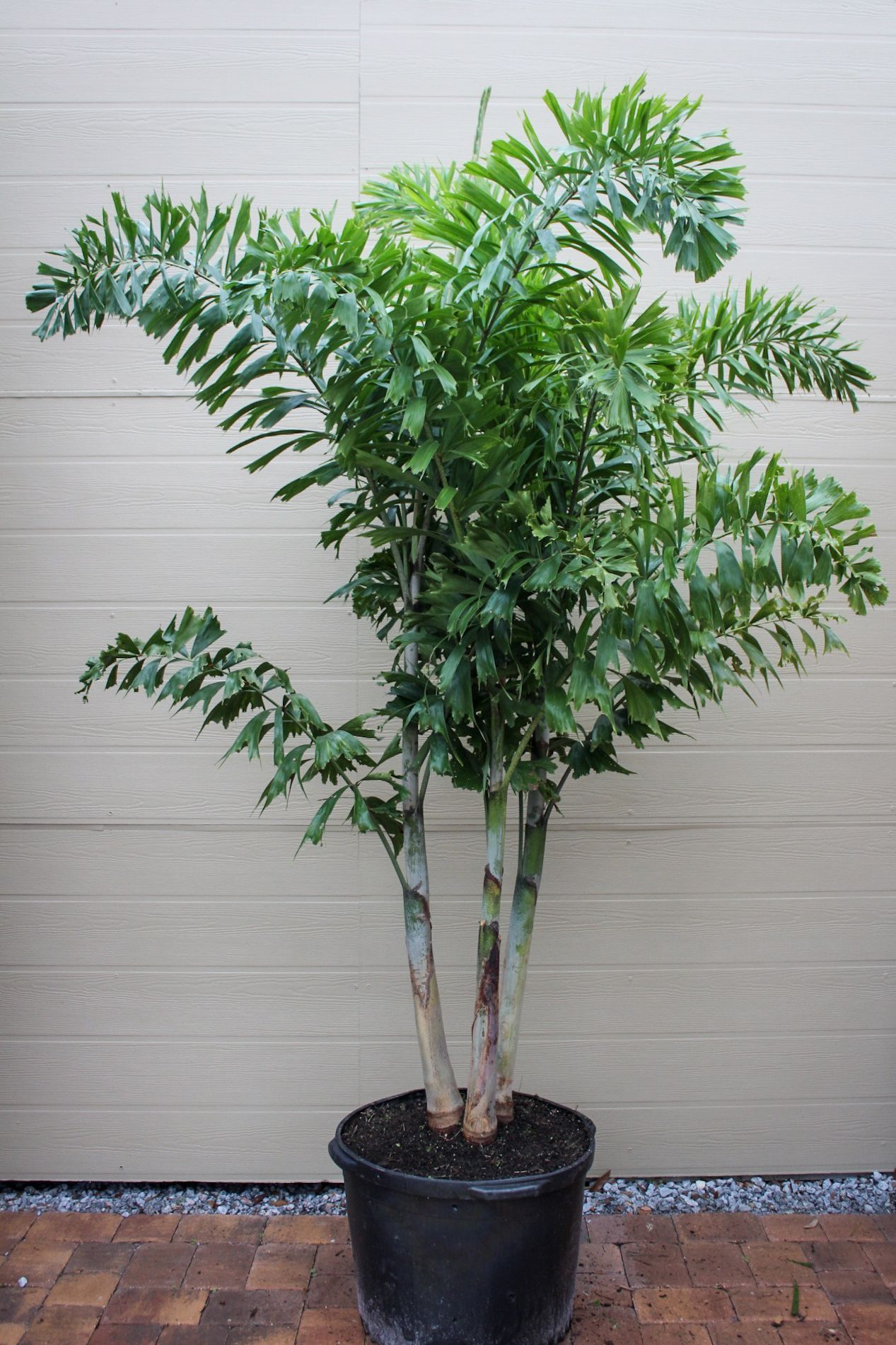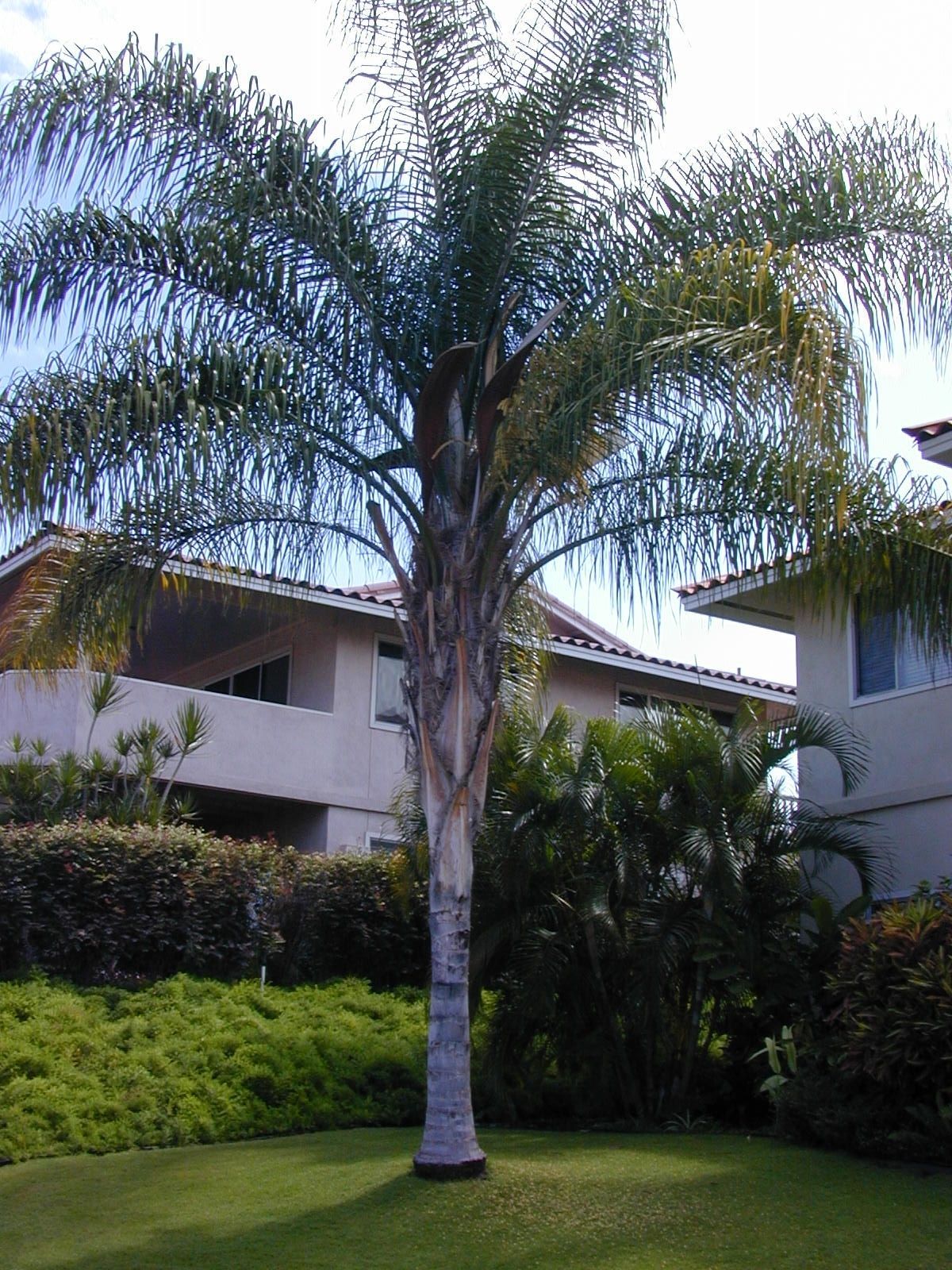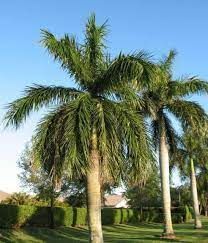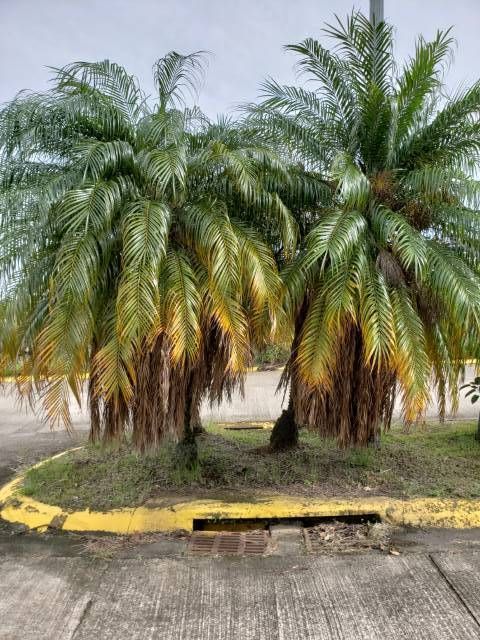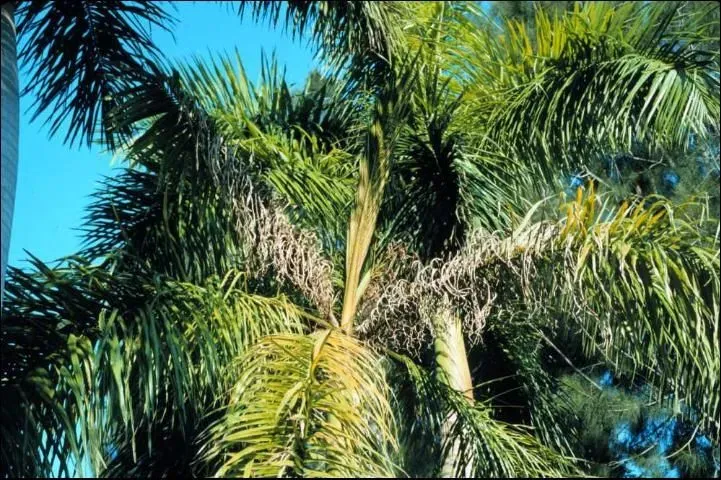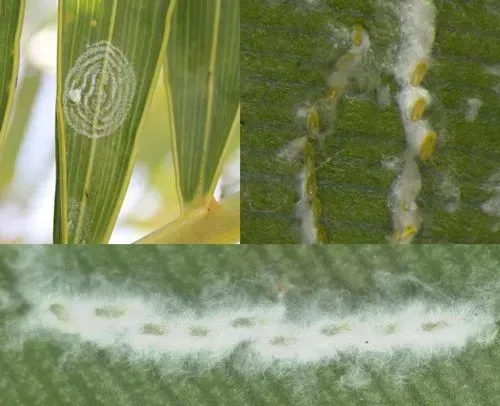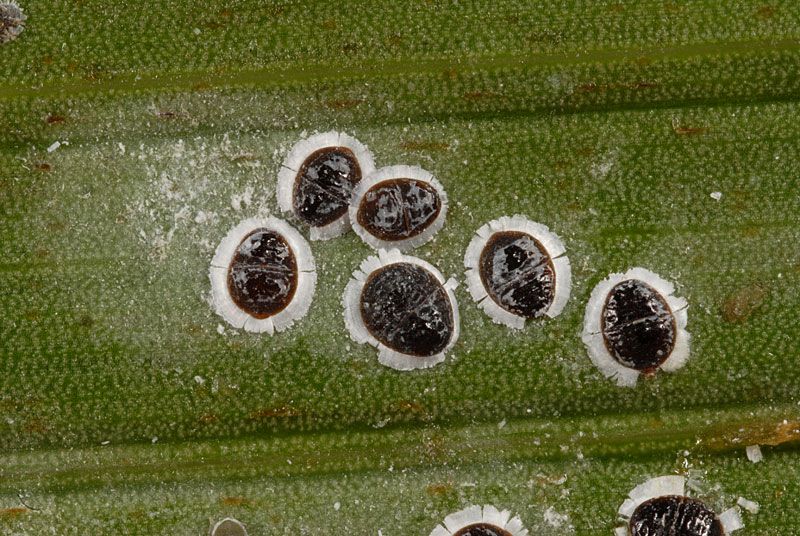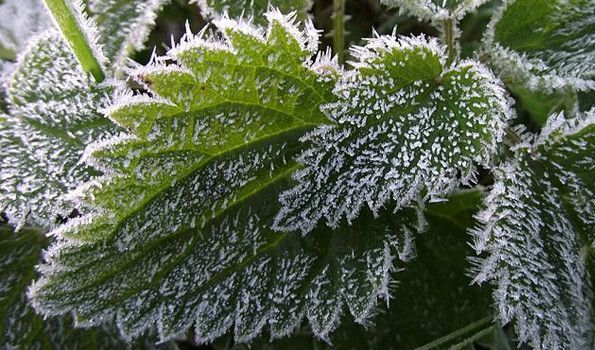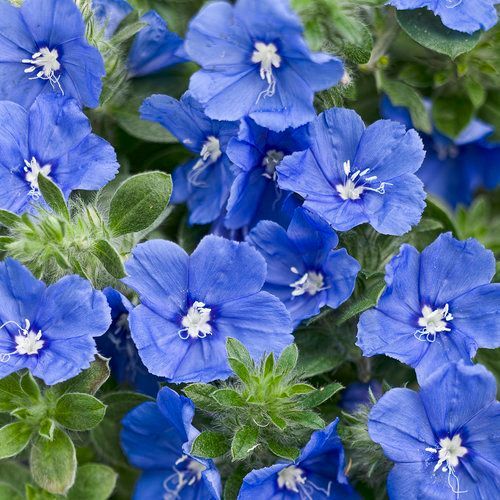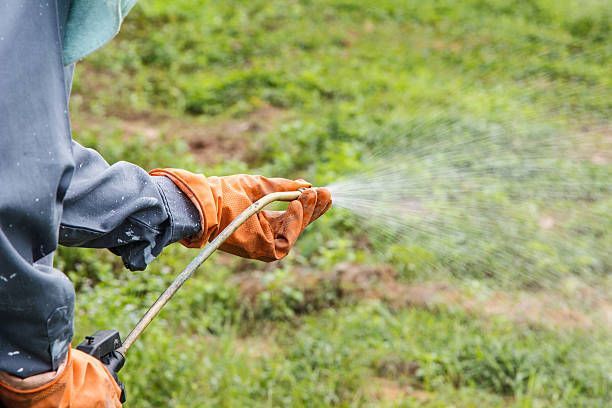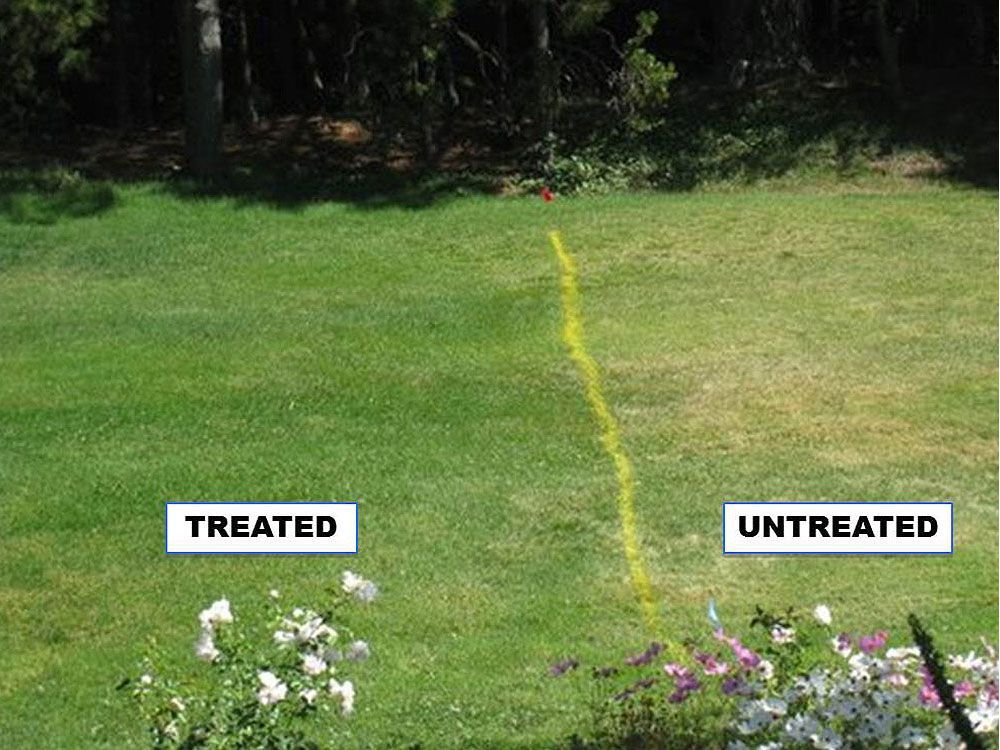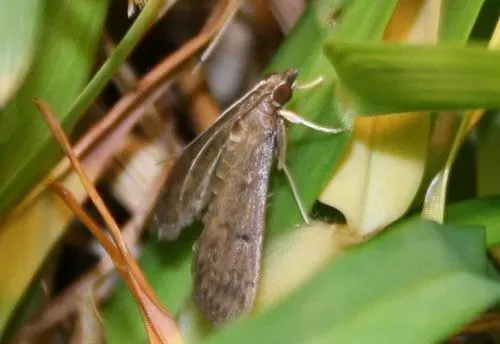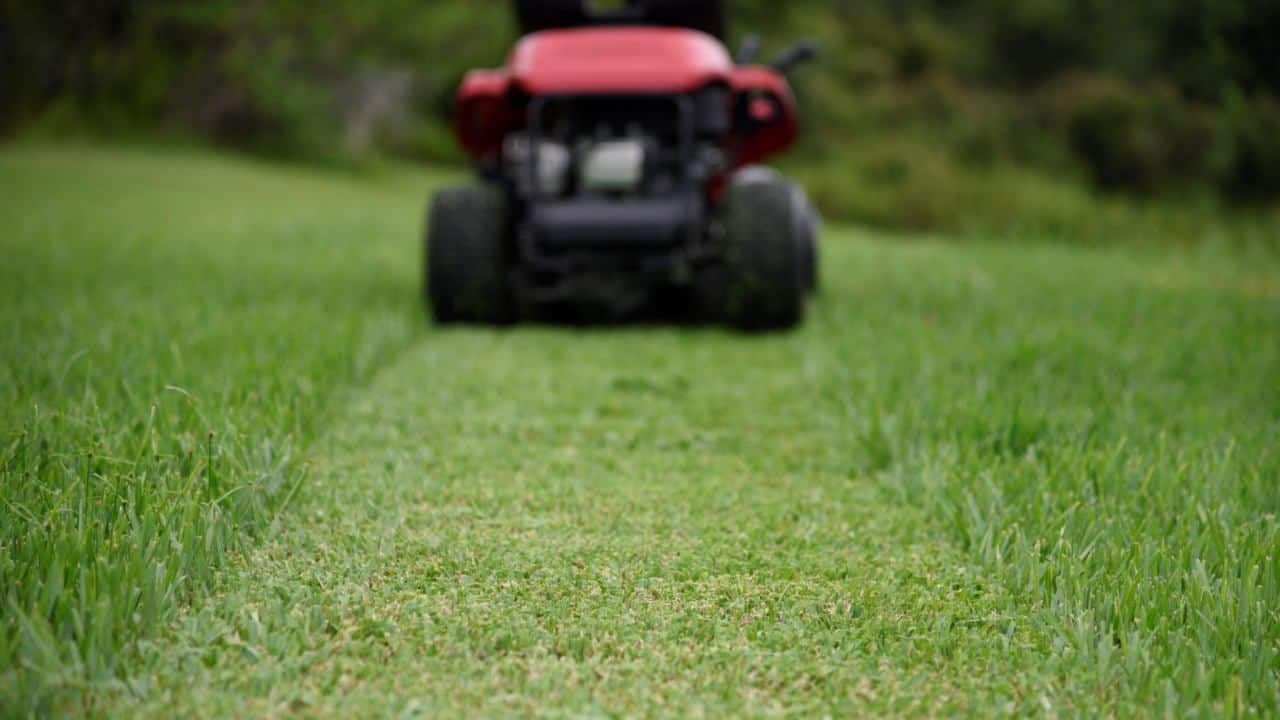The best methods for keeping your palms healthy and thriving
Main Takeaways from This Article:
- Trim/clean up the old and waning fronds on your palms
- Water about 2 times a week, avoiding as much “overhead watering” as possible
- For outdoor container palms, water every day or every other day depending on the weather.
- For indoor container palms, water about once a week or longer depending on the moistness of the soil.
- Use palm specific fertilizers, as they contain nutrients designed to feed your palms the best way possible.
- Fertilize in the spring, summer, and fall. Feeding your plants in colder months may stress them out.
- Correct chlorosis (yellowing) on palms with Magnesium Sulfate
- Correct “frizzle top” on palms with Manganese Sulfate
- Correct new growth malformations with Boron
- Treat black spot fungus with a Systemic Fungicide
- Treat bugs by washing the palm with an insecticidal soap
Questions Answered in This Article:
- What kind of palm do I have?
- How do I trim/clean up my palm?
- How should I water my palm?
- What kind of fertilizer should I use?
- When should I fertilize my palms?
- Why is my palm yellowing?
- Why is my palm frizzling?
- Why does the new growth on my palm look strange?
- Why does my palm have brown/black spots?
- What kind of bugs does my palm have, and how do I get rid of them?
For homeowners and plant parents, taking care of your garden or container palms is of utmost importance to keep them looking healthy and strong. We will teach you everything you need to know about how to maintain your palms, including how to water them, fertilize them, treat diseases, and trim and clean them. But first, let’s find out what kind of palm you are caring for.
What kind of palm do I have?
There are many different types of landscape and container palms, so we’ll go over the most common palms in the Tampa Bay area. To see the full list of palms Green Thumb Nursery carries, check our Palms & Cycads inventory. Even if your palm is not on this list, many of the treatments we will recommend will still work for your palm. Let’s go over the list.
How do I trim my palm?
Depending on the type of palm you have, you may not need to trim their fronds at all! Adonidia palms and foxtail palms are considered “self-cleaning,” meaning that they naturally shed their old fronds as they grow new ones. They tend to brown naturally as they reach this stage. You can peel the fronds off once they are dryer and have less tension when pulling. Alternatively, you can cut them early as you see the signs of their shedding. You can also let the palm shed the old frond entirely on its own!
If your palm is not one of the naturally “self-cleaning” types, such as the pygmy date palm and the queen palm, you will have to trim the fronds yourself to maintain its beauty. Now imagine you have a clock, and the pygmy date palm is on the clock. As you look at the face of the palm-clock, you want to prune the fronds that fall in the bottom half of the 9 to 3 o’clock range. That is where the fronds start to droop and brown. Trimming those fronds off will be healthier for the palm, as it is no longer diverting energy to fronds that are losing their luster. We recommend using a long pair of loppers to get good leverage on the cut as well as to avoid getting poked by its spikes. Cut them as close to the trunk as possible.
If you are cutting a queen palm, it might take some heavy equipment. If your tree is taller than 10’, a ladder may be required to reach the top. You want to use the same clock rule that we used to explain the pygmy date palm’s cutting guidelines - you want to cut fronds that are in the bottom half of the 9 to 3 o’clock range. Check the base of the fronds to see if they are brown. If so, you may cut them. Do not cut fronds that are still green at the base. Use a saw to cut the dead fronds. Protective eyewear may help. Royal palms can be cut in the same way.
Areca palms, which are technically self-cleaning, will require some clean up towards the base of the plant. This is usually as simple as peeling and pulling some of the old fronds off the trunks, similar to how you would with an adonidia or foxtail palm. Avoid trimming the tips of the live branches, as that will essentially terminate the whole branch.
How should I water my palms?
There are several factors you need to take into account to determine how you should water your palms.
- How long has the palm been in the ground? If you just recently planted it in the ground outside, make sure you water it every day for two weeks to help it get established. If your plant is well established, water it 2-3 times a week with your irrigation. If you lack irrigation, hand water it with a hose or watering can.
- Do you keep it in a container? If so, the frequency at which you water it may need to increase. If you keep the palms outside in the full sun, water them everyday. If kept inside, water once every week or two weeks depending on the rate at which it dries out. Put your finger about an inch into the soil to check its moistness. If it is dry, go ahead and water it.
- Where should I water the palm? You should water the palm at its base while avoiding as much overhead watering as possible. We will discuss why that is the case later in the article.
- How big is the palm? Depending on the size, your palm’s water requirements may change. If it is big, it needs more water; if it is smaller, less.
What kind of fertilizer should I use?
You should use fertilizer specifically designed for palms. We offer many different products, including granules, liquids, and spikes. We’ll go over each of the products and when to use them, but you should always keep a general palm fertilizer in stock. Our
Sunniland Palm Fertilizer is a granule that works for any type of palm, whether they be in the ground or a container.
Lutz Palm Maintenance Spikes are ideal for large palms planted in the ground. They are a slow release fertilizer that is absorbed gradually over time.
Fertilome Tree & Shrub Food is a good general purpose granular fertilizer that will work well for palms while also being suitable for most of your other trees and shrubs.
-
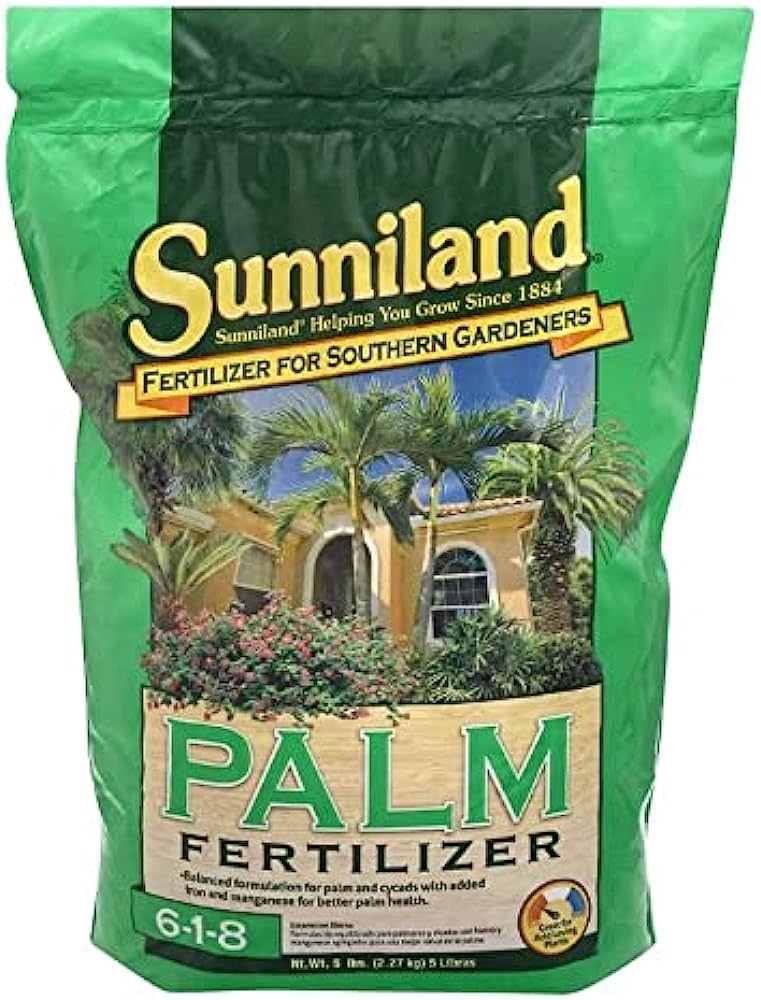
Recommended Fertilizers
Sunniland Palm Fertilizer is a fantastic granular palm fertilizer.
Button
-
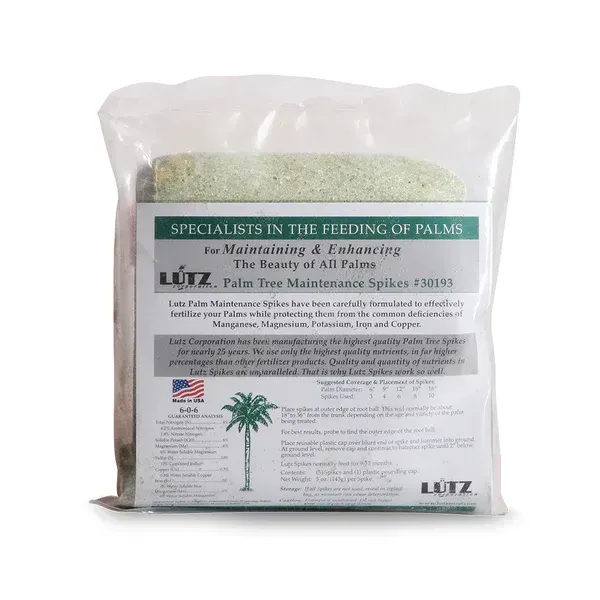
Slide title
Lutz Palm Maintenance Spikes will give your palm nutrition that lasts.
Button
-
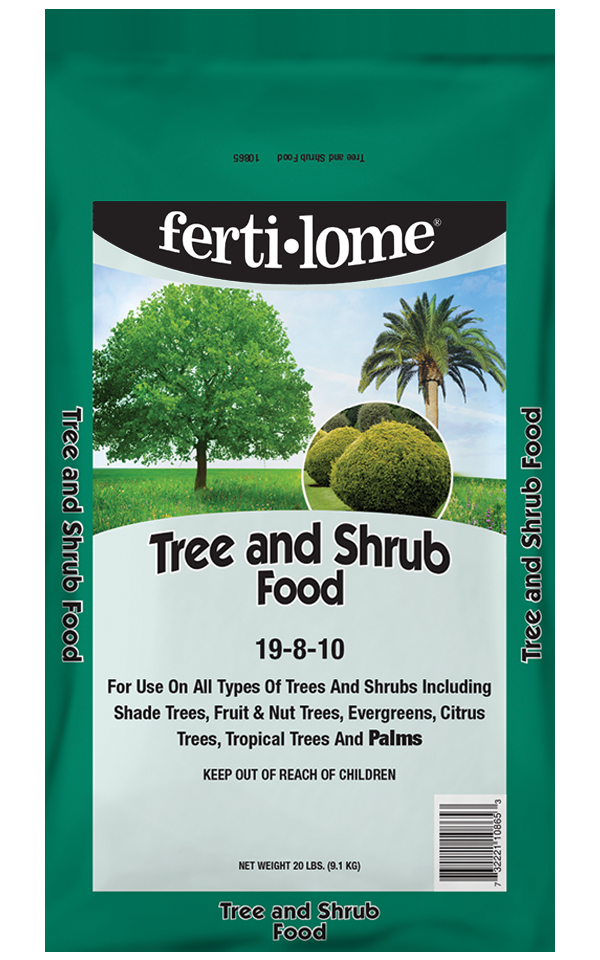
Slide title
Tree and Shrub Food is a great general purpose fertilizer that also works for your palms.
Button
Why does the new growth on my palm look strange?
Sometimes, the new growth on palms looks strange. If the fronds do not open properly or are malformed, then you may have a boron deficiency in your palm. This deficiency has many other names: hook leaf, fasciation, fishbone leaf, blind leaf, and accordion leaf. Other symptoms of boron deficiency include a drooping look to the fronds or the entire head of the palm, wrinkled or zig-zag like growth, or even the growth of multiple heads. Yellowing is not a symptom of boron deficiency, as malformed growth usually grows green if there are no other nutrient deficiencies. To treat boron deficiency, we recommend using our
Essential Minor Elements. It has a higher concentration of boron than our other palm fertilizers and also contains many other nutrients not typically found in general fertilizers that promote the health of palms, such as manganese, magnesium, iron, sulfur, copper, and zinc.
Photo Credit: T.K. Broschat, UF/IFAS
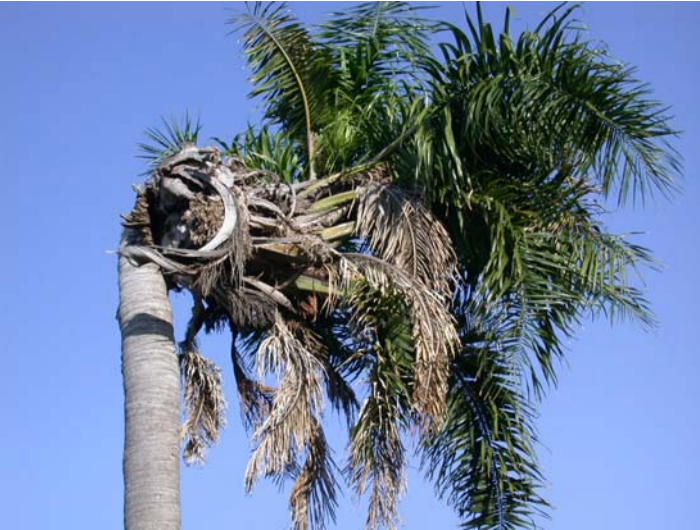
Slide title
Boron deficiency may cause palms to grow improperly.
Button
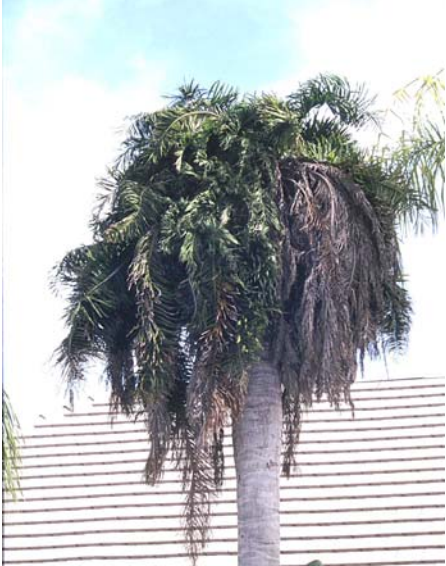
Slide title
This palm has a deflated look due to a boron deficiency.
Button
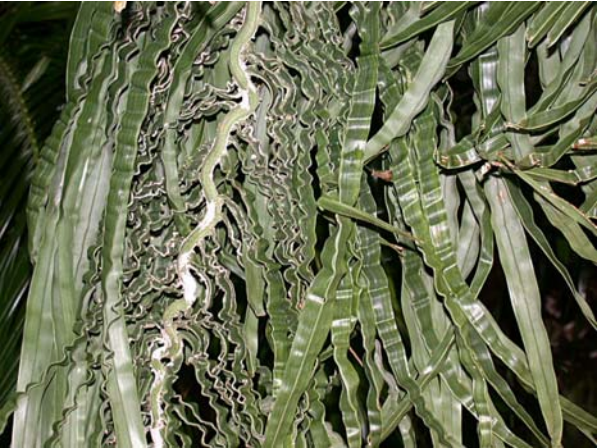
Slide title
A lack of boron has caused these fronds to open improperly like an accordion.
Button
Why does my palm have brown and black spots?
If your palm has brown and black spots, it may have a fungus called black spot fungus or leaf spots. Leaf spots mostly occur due to how and where the palm receives water and are more common in juvenile palms. If the palm receives too much overhead water through either rain or hand-watering, they may contract leaf spots. It is a common occurrence during the summer time when we get a lot of rain. To treat this issue, we recommend using our Liquid Systemic Fungicide, which is available both in a
concentrate and as a
ready-to-spray hose end attachment. Follow up fungicidal treatment with a palm fertilizer. However, you want to wait until you notice that the spread of the contagion has stopped before you put down more fertilizer, otherwise you may end up feeding both the plant and the fungus. The iron in our palm fertilizers will also help correct this issue.
Photo Credit: T.K. Broschat, M.L. Elliot; UF/IFAS
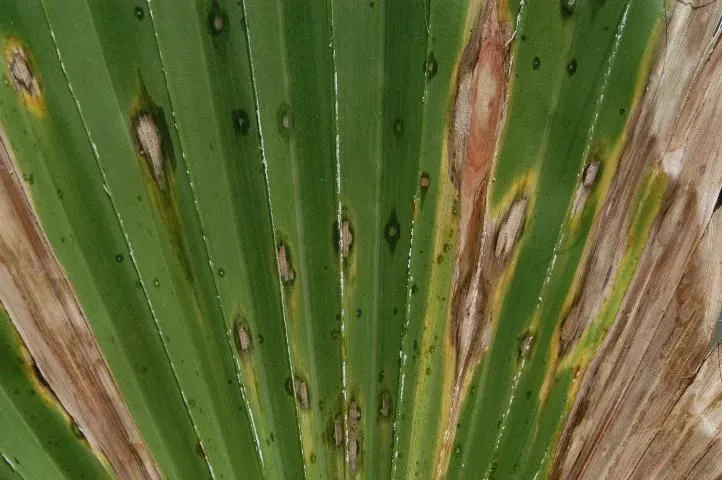
Slide title
This palm has developed brown spot fungus on its fronds.
Button
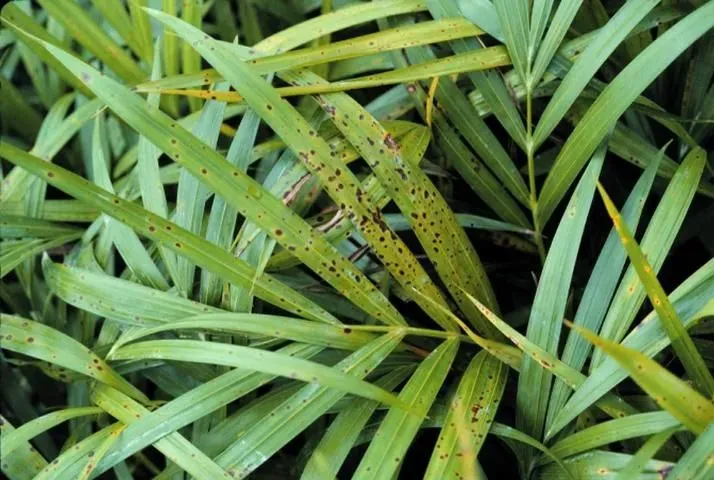
Slide title
Leaf spots may occur during the rainy season.
Button
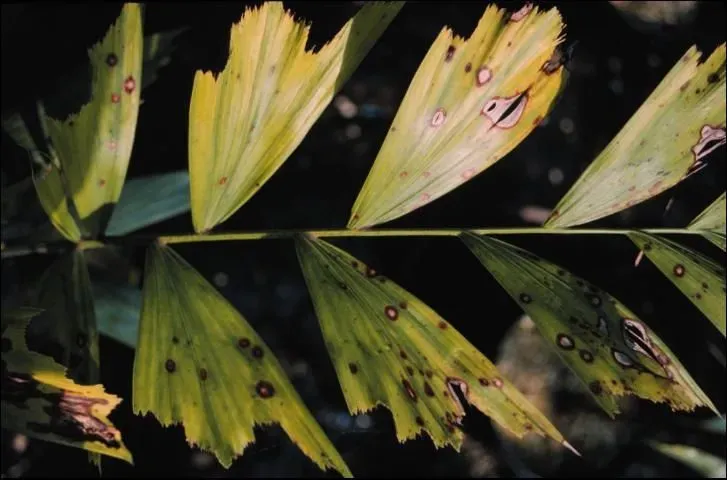
Slide title
Treat brown spots with Liquid Systemic Fungicide.
Button
What kind of bugs does my palm have, and how do I get rid of them?
Thankfully, palms are naturally resistant to most bugs, especially if they are kept outside and not in your home or greenhouse. However, in the off case where they do get infested, it is usually by the following insects. One is spider mites, which can also form a spider-like webbing on the plant. They can be removed by placing your palm either outside or in the shower and hosing the insects off the plant with water. Remaining spider mites can be wiped off with rubbing alcohol. You can also spray spider mites with certified organic neem oil to kill them. We carry neem oil in a
concentrate and a
ready-to-use spray bottle. If you are spraying a palm outside, make sure it is either in the early morning or evening, as oil based products may burn your palm if sprayed midday in the sun. Mealybugs, another type of palm insect, can be treated in the same way as spider mites.
Photo Credit: Planta; Lyle Buss, UF/IFAS
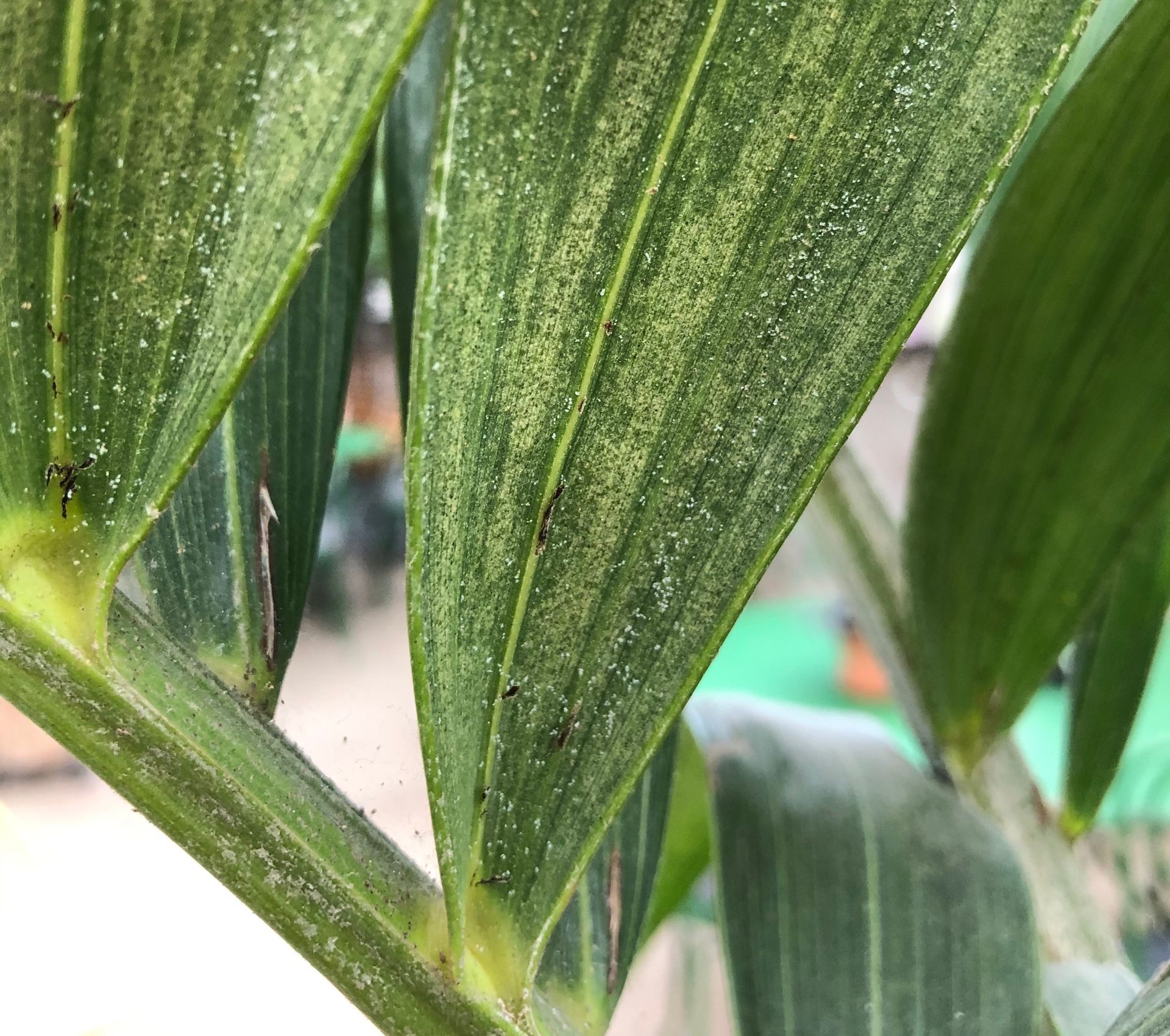
Slide title
Spider mites have infested this palm.
Button
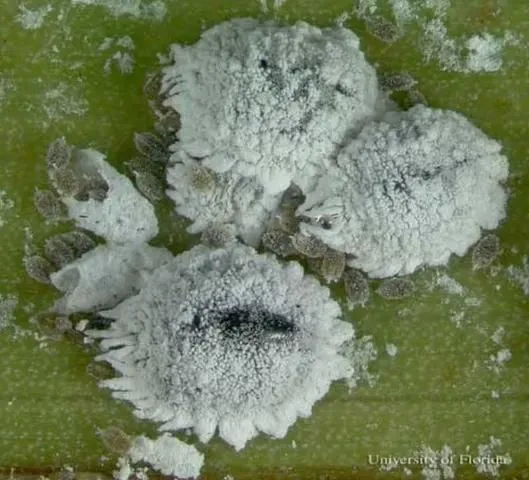
Slide title
Mealybugs can also attack palms.
Button
Royal palm bugs infest royal palms. Who would've thought? The bugs suck on the fronds of the palm, causing them to develop brown streaks. Eventually, the leaves will look gray and frayed from the infestation. Once the royal palms become too tall, it can be difficult to reach the fronds with an insecticidal spray. The best course of action is to use a systemic drench on the roots of the palm to treat the infestation. Our Tree & Shrub Drench comes in a
quart and a
gallon and is used to combat bugs on especially large and tall trees. Mix it with water and pour it on the base of the tree to kill the insects and protect the palm for up to six months.
Photo Credit: Lyle J. Buss, Doug Caldwell; UF
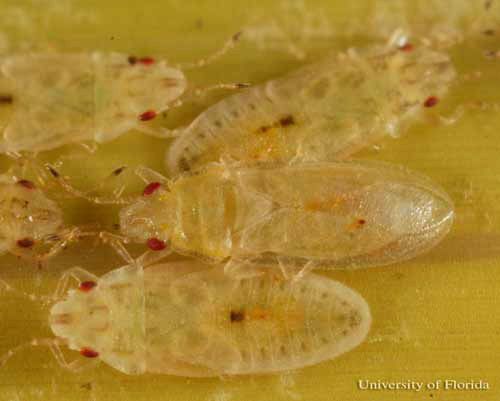
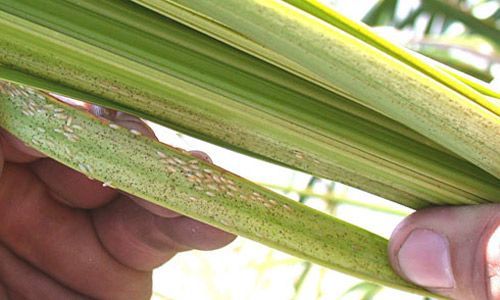
Slide title
Royal palm bug will cause brown streaks to form on the fronds.
Button
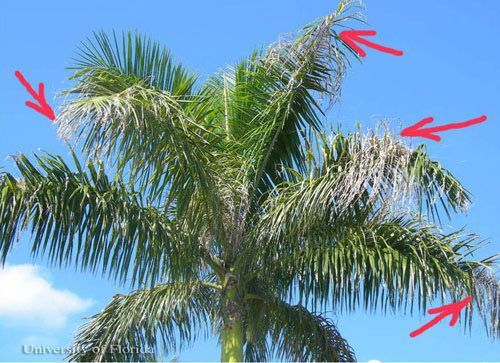
Slide title
An infestation may cause the fronds to gradually gray and fray.
Button
Conclusion
Taking care of your palms can be a challenge. Thankfully, we are here to make it easy! We hope that you found this article helpful. Remember to trim and clean your palms when needed, water them correctly, fertilize them, treat for nutrient deficiencies, and watch out for fungus. If you have any questions, you can always call our office at 813-884-3797 or come and visit us at 6913 Sheldon Rd., Tampa, FL 33615. We also have all products listed in the article on our website and at the storefront. We are happy to serve you!
